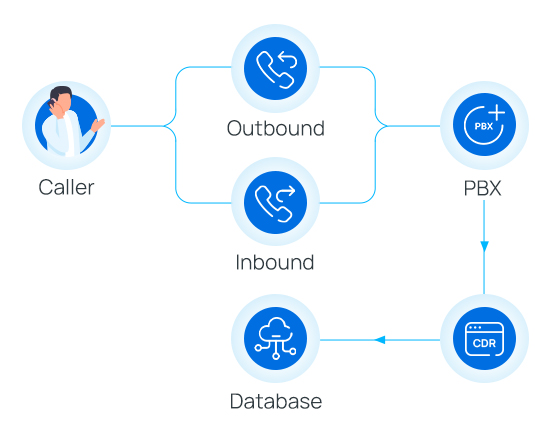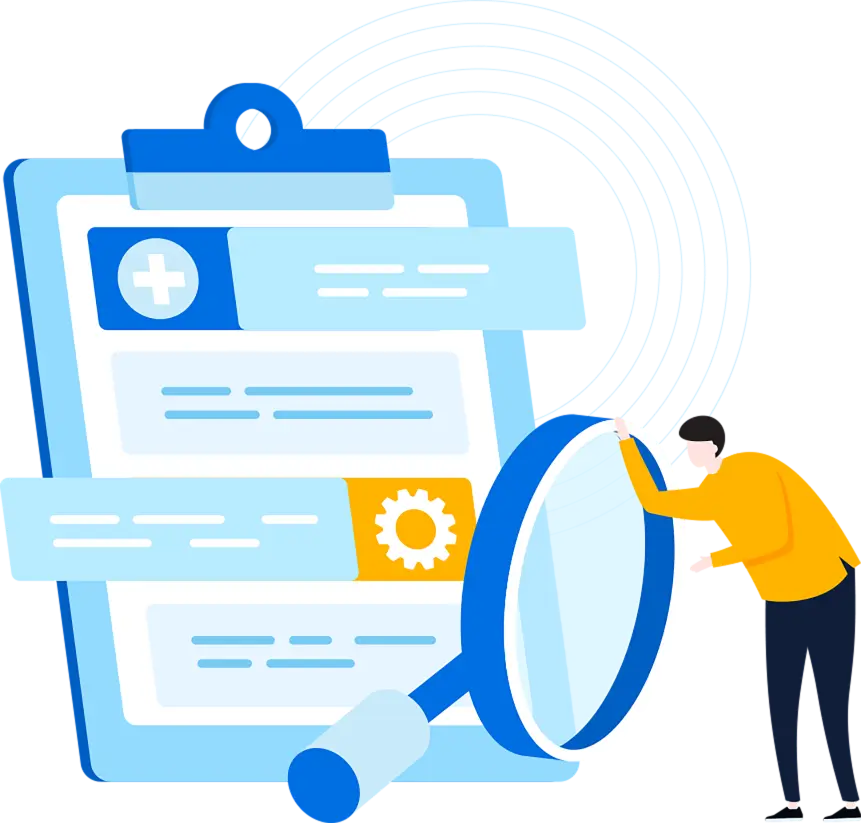A call detail record, CDR for short, provides data about incoming and outgoing calls made on the telephone system. This kind of information can later be used by businesses for reporting and billing purposes, providing them with answers about where, when, and how calls are made.
Call detail records also provide companies with helpful insight into their phone systems, allowing them to use this data to improve their communications. If your goal is to boost your call center efficiency, CDR data can help you determine where to start. It can also help you resolve any billing disputes with your service provider and even allow you to save money and maximize your business revenue.
Long story short, a CDR is a vital feature for any VoIP system to have. At Yeastar, we understand that perfectly, which is why we provide our users with comprehensive call detail record reports.
What Are Call Detail Records?
Simply put, a call detail record is a record of a phone call or text message. There are two ways to log calls – via wireless network or VoIP (voice over internet protocol) system.
In the first case, the CDR logs wireless calls through the company’s cell towers. However, if a company uses VoIP, the data record will then consist of all the incoming and outgoing calls, be it from VoIP or a wireless network.
Now, as for what kind of information call detail records provide, we can typically include:
-
Date and time of a telephone call
-
Call duration (in minutes)
-
Information on the source and destination telephone numbers
-
Type of a phone call – toll-free, inbound, outbound
-
Cost of a call (per minute rate)
Besides calling activity, CDR data also includes text messages other communications transmission. What’s important to note here is that a call detail record doesn’t reveal the content of a message or call. It only measures primary call properties, showing messages and call logs.
How Does a CDR Work?

Call detail records are generated by dedicated software and later stored in a database compatible with the provided software program. When it comes to larger service providers, they typically utilize their own CDR software to store and analyze call detail records. As for companies with VoIP systems, they usually take advantage of open-source software programs that come with a CDR feature.
When logging calls, the software will assign a call identifier (ID) to the call that comes to the network, be it via a VoIP connection or cell tower. This unique code will then travel with the call as it passes between phone extensions or cell towers. Once the call is finished, the program will then log it into the database along with all the basic information (date, duration, etc.).
How to configure CDR in Yeastar Phone System
Manage CDR in Yeastar Phone System is easy and you won’t pay extra for this feature, whether you opt for the cloud, hardware, or software solution with Yeastar! Check out the video and links below for a step-by-step guide.

Benefits of a CDR

Call Detail Record FAQs
How can I generate my CDR data report?
CDR reports are part of the reporting features in our VoIP software. As an admin, you'll be able to access and generate them. Just select the timeframe that interests you and generate the report. As for the wireless network CDR information, the reports will be provided by your provider as formal phone bills sent to you by mail.
What kind of information does call detail records store?
Call detail records store only basic info about SMS messages, inbound calls, and outbound calls. The report won't provide you with call recordings and the content of the message. Instead, you will be able to see such information as:
Date and time of the call,
The called number ID
How long was the call was
What kind of call was made (incoming, outgoing, or toll-free)
Cost of the call
The type of data will also depend on whether the call was logged via a cellular tower or VoIP system. Still, the list above contains records that are considered a standard in the industry.
How can my business use CDR?
In essence, a call detail record (CDR) provides businesses with data regarding phone calls made on their telephone systems, such as phone numbers, date of a call, call period, etc. It also includes info regarding text messages. This data can come from either a cell tower or VoIP (voice over internet protocol) system.
As for the usage, there are many ways your organization can use the data provided by your phone system. Among the most significant usages, we can include:
Assistance with billing purposes and reporting,
Productivity management,
Budget optimization,
Usage patterns evaluation.
Who can access my call detail records?
You, of course, as an admin, and any other user within your company granted admin privileges. Also, remember that call detail records aren't protected by the 4th Amendment. It means that law enforcement can obtain them without a warrant. Other than that, your records will be protected and kept secure from any suspicious activity, especially when you use state-of-the-art VoIP software like ours.
Flexible Deployment Options: Cloud-based or On-premises
Available in the Appliance, Software, and Cloud Edition, Yeastar provides
flexible deployment options,
allowing you to have your PBX system sited on-premises or in the
cloud.
Appliance Edition
If you prefer a plug-and-play system deployed within your company to ensure complete control, the Appliance Edition is the perfect fit.
See SpecificationsCloud Edition
Want to eliminate the workload of hardware installation while having your phone system up & running immediately? This is the option for you.
Learn MoreSoftware Edition
You make the call whether to install the PBX system on a hardware server, a virtual machine, or even in the cloud.
Learn More